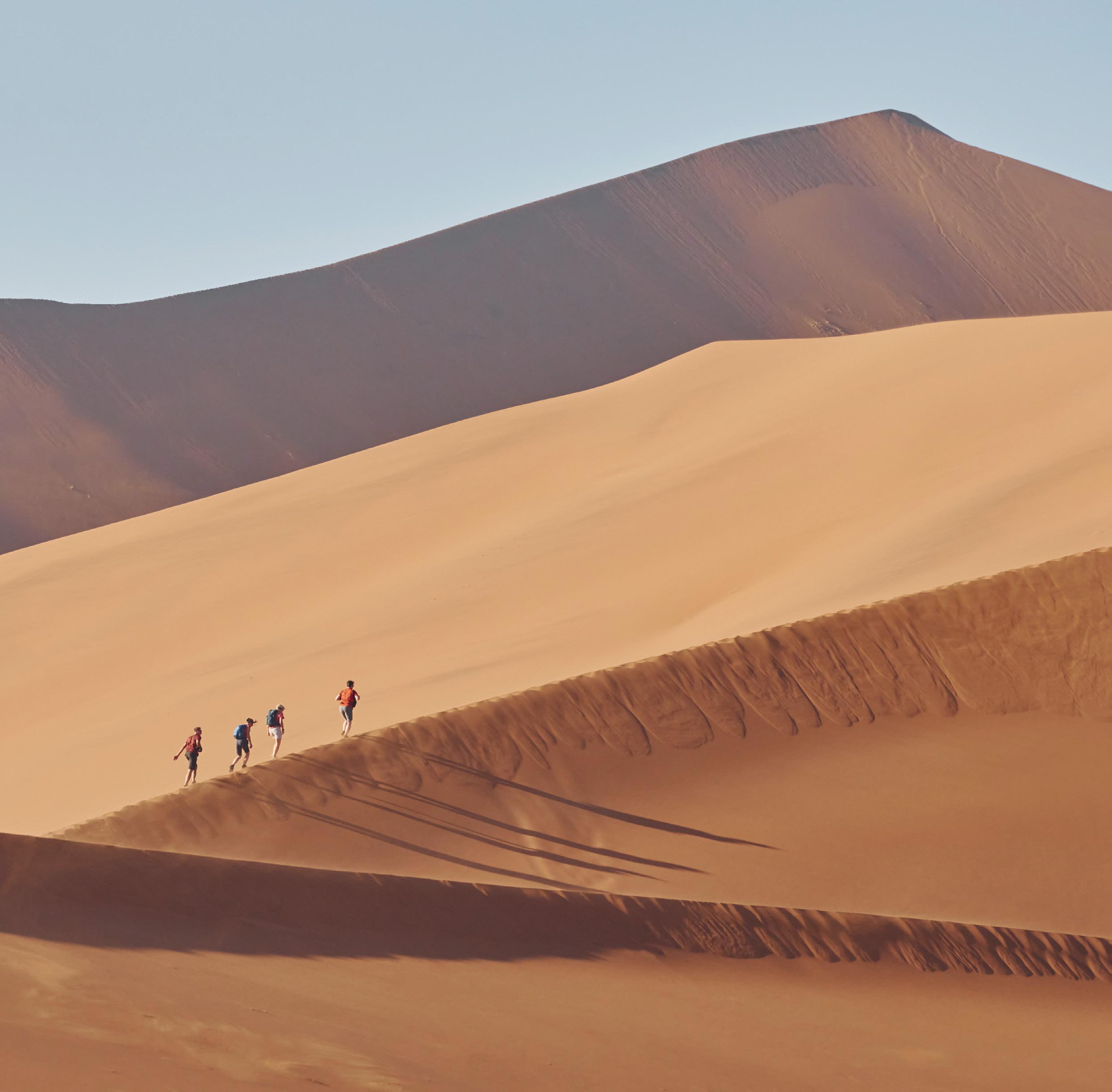
4 minute read
The unusual busy off-peak tourism season in Namibia
Tourism in Namibia has traditionally exhibited a distinct cyclicality, with the peak season running from July to October. This pattern seems to be waning with a higher than usual number of visitors gracing Namibia during this latest January to April period. Below we explore the changing landscape of tourism in Namibia in more depth.
The seasonal nature of tourism in Namibia can be attributed to various factors, primarily the European holiday season and high temperature variability with hot rainy seasons. However, recent figures paint a different picture, with 166,930 passengers arriving at Namibian airports between January and April – 17.9% higher than during the same period in 2023 and a new high-water mark for the period.
This rise in off-peak tourist visits beyond the previous traditional peak season has the potential to stabilise revenue streams for the hospitality sector going forward. Additionally, tourism has a high multiplier effect, bringing cash to the far corners of the country. With more tourists visiting all year round, there will be an increase in the consumption of goods and services, driving supply chains for wholesale goods, agriculture, artisanal products and other subsidiary sectors. Indeed, tourism’s contribution to the gross domestic product (GDP) reached N$14.3 billion in 2022, or 7% of the GDP, according to the Tourism Satellite Account of Namibia.
The winds of change are driven by the nascent energy sector (oil discoveries and green hydrogen) and increased awareness of Namibia’s tourist attractions, amplified through social media. Social media platforms act as a beacon, drawing a diverse array of tourists, including solo adventurers and those seeking bespoke tours, as noted by Gitta Paetzold, CEO of the Hospitality Association of Namibia (HAN). The off-peak season offers a sense of calm, appealing to the solo traveller seeking authentic, serene experiences away from the crowds.
The rise in self-drive tourism, especially among those renting fully equipped camping vehicles, highlights the growth in independent, flexible travel. This can be seen by the increasing number of rental companies in Namibia. To further emphasise the preference towards flexibility, tourists are gravitating towards non-traditional accommodation like Airbnb, which escapes traditional tourism statistics.
Business travel, spurred by Namibia’s growing energy sector, has also fuelled off-peak tourism. Conferences and business trips often transform into extended leisure stays, and business travellers enchanted by Namibia’s beauty often bring their families back for vacations. In countries such as Angola, the business community significantly contributes to tourism spending, and we expect Namibia’s energy sector to positively impact tourism as well. Forthcoming conferences in the airline, tourism and energy sectors are poised to further elevate Namibia’s profile.
According to the European Travel Commission, 75% of surveyed Europeans plan to travel between May and October 2024, a 3% increase from last year. Of these, 11% intend to travel solo, 38% with a partner, 34% with family and 12% with friends. European tourists made up 54.8% of Namibia’s visitors this year and have consistently comprised around 42% of the total tourist pool since 2016.
However, capturing the full impact of these new trends poses a challenge. Non-traditional accommodation and independent travel often slip through the cracks of traditional data collection. According to Paetzold, the additional stream of business and revenue flows into Namibia is assumed to be through businesses that offer online booking platforms but are not captured in terms of official tourism revenue or tax declaration, yet with a significant impact and footprint on the Namibian environment and infrastructure. For example, Airbnb and other online accommodation offerings are popular among the self-drive community and much of this business is not reflected in the official statistics. Further, transport services like Yango and InDrive are not registered like formal shuttle operators, contributing to the gap in the statistics. This suggests that tourism’s impact on the economy is larger than official statistics indicate.
The shift towards year-round tourism signals substantial economic benefits and opportunities for sustainable growth, and positions Namibia to become a perennial destination. As the trends in tourism change, the notion of a peak season may one day be a relic of the past, replaced by a continuous flow of visitors boosting Namibia’s tourism sector all year round and increasing economic activity.










